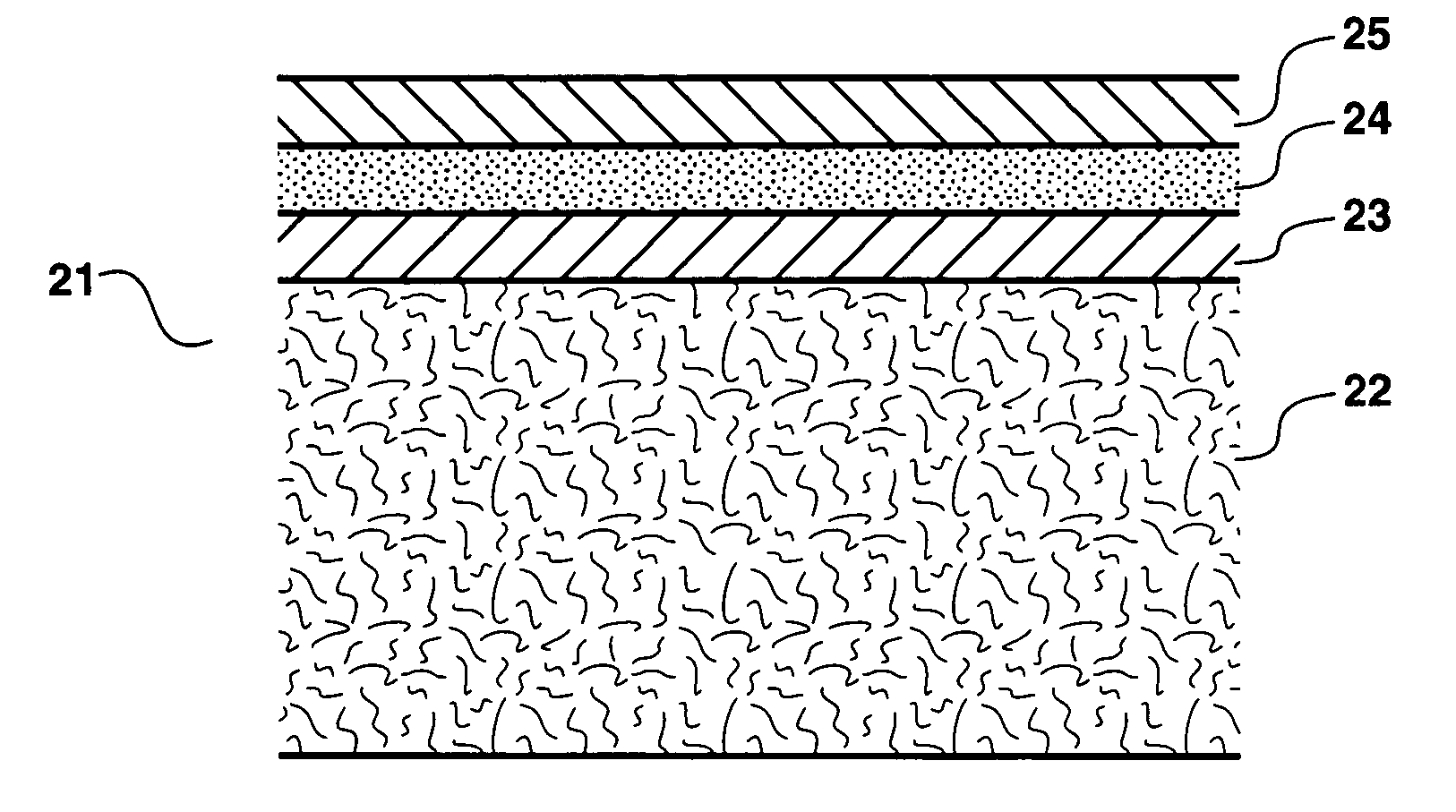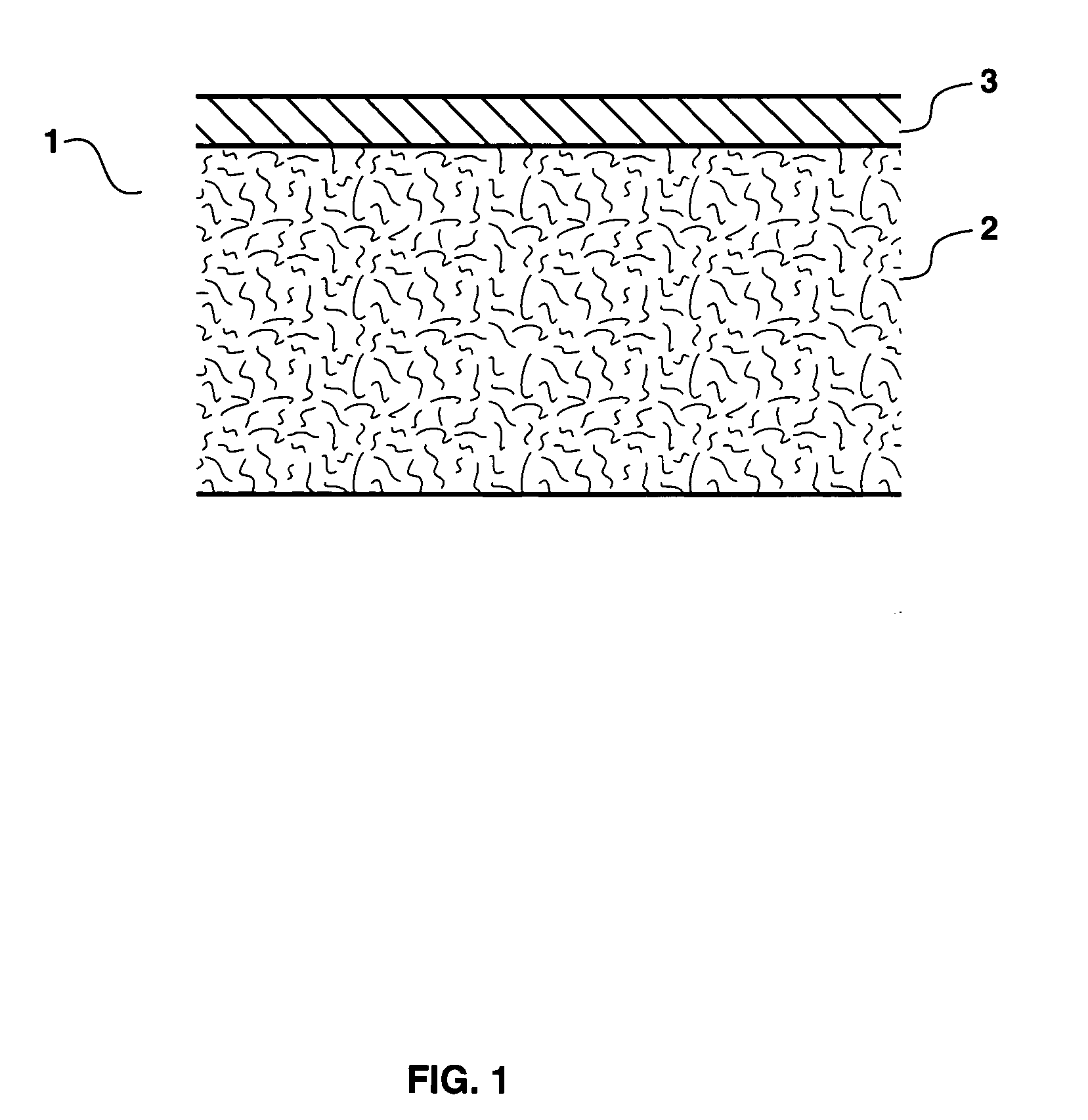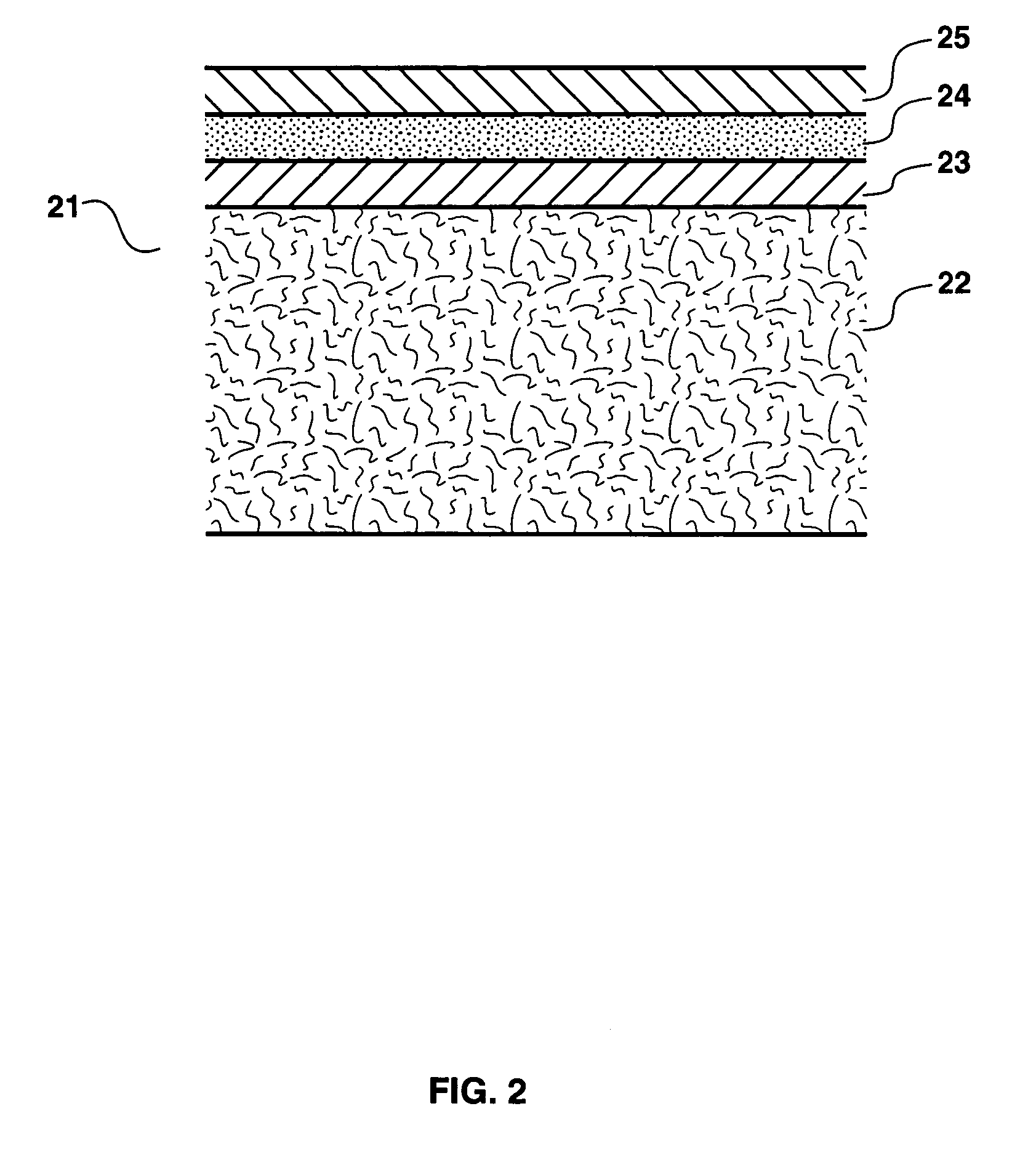Reverse osmosis membrane and process
a reverse osmosis membrane and process technology, applied in reverse osmosis, separation processes, filtration separation, etc., can solve the problems of membrane fouling, membrane fouling very easily, and fouling continues to be a serious problem for reverse osmosis membranes
- Summary
- Abstract
- Description
- Claims
- Application Information
AI Technical Summary
Benefits of technology
Problems solved by technology
Method used
Image
Examples
example 1
Water Sorption Tests
Films of different grades of polyether-polyamide block copolymer (Pebax®, ATOFINA Chemicals, Philadelphia, Pa.) are made by coating a solution of each copolymer onto a glass plate. The films are dried in an oven to completely evaporate the solvent. The water sorption capabilities of the resulting dry films are determined by first weighing samples of each film, then immersing the samples in a water bath. The water-soaked samples are taken out of the bath, excess water is removed, and the samples weighed again. The soaking-and-weighing procedure is repeated until no further weight increase is observed.
The water sorption capabilities of various grades of Pebax, expressed as a weight-percent of the original dry weight of the polymer samples, are shown in Table 1.
TABLE 1Copolymer CompositionWater SorptionPolymer TypePolyetherPolyamide(wt %)PA12-PTMEG(80)80% PTMEG20% PA-121.2PA12-PEG(40)40% PEG60% PA-1212PA12-PEG(50)50% PEG50% PA-1248PA6-PEG(50)50% PEG50% PA-6120...
example 2
Membrane Preparation
Coated composite membranes were prepared from commercial seawater-grade (SWC1 and SWC2) and brackish-water-grade (LFC1) interfacial composite reverse osmosis membranes (Hydranautics, Oceanside, Calif.). The LFC1 membrane is itself a coated membrane, comprising a cross-linked polyamide reverse osmosis membrane (ESPA, Hydranautics, Oceanside, Calif.) coated with a polyvinyl alcohol layer, as described in U.S. Pat. No. 6,413,425.
Dilute solutions of 0.5-1.0% Pebax 1074 or Pebax 1657 grade polymer in n-butanol were prepared by refluxing the solution at 112° C. for 24 hours. Samples of the reverse osmosis membranes were dip-coated in the polymer solution at a coating speed of 1 ft / min and a temperature of 23° C., and then dried in an oven for 30 minutes at 60° C. After complete evaporation of the solvent, a 0.2- to 2.0 μm thick Pebax layer was left on each membrane.
Scanning electron micrographs (SEMs) were taken of both uncoated and coated membranes. FIG. 4 is an...
example 3
Membrane Gas Permeation Tests
A series of gas permeation tests were performed with uncoated commercial reverse osmosis membranes and with the same membranes coated in accordance with the invention. Samples of brackish-water-grade LFC and ESPA membranes and seawater-grade SWC membranes (Hydranautics, Oceanside, Calif.) were coated with a layer of Pebax 1657 as in Example 2. Both the uncoated and coated membranes were tested with pure oxygen, nitrogen, and hydrogen in a gas permeation test cell. The feed pressure was 50 psig, the permeate pressure was atmospheric, and the temperature was 23° C. The pressure-normalized fluxes were measured and selectivities calculated. The results are shown in Table 2.
TABLE 2Pressure-Normalized Flux (GPU*)SelectivityMembraneN2O2H2O2 / N2H2 / N2LFC118.716.864.40.903.5SWC238.935.31460.913.8SWC413.612.855.80.944.1ESPA13.312.455.40.934.2Pebax / LFC10.00710.0190.432.760Pebax / SWC20.0390.156.03.8154Pebax / SWC40.0230.094.83.9209Pebax / ESPA0.0250.0554.32.2172
*1 GPU ...
PUM
| Property | Measurement | Unit |
|---|---|---|
| feed pressure | aaaaa | aaaaa |
| water sorption | aaaaa | aaaaa |
| water sorption | aaaaa | aaaaa |
Abstract
Description
Claims
Application Information
 Login to View More
Login to View More - R&D
- Intellectual Property
- Life Sciences
- Materials
- Tech Scout
- Unparalleled Data Quality
- Higher Quality Content
- 60% Fewer Hallucinations
Browse by: Latest US Patents, China's latest patents, Technical Efficacy Thesaurus, Application Domain, Technology Topic, Popular Technical Reports.
© 2025 PatSnap. All rights reserved.Legal|Privacy policy|Modern Slavery Act Transparency Statement|Sitemap|About US| Contact US: help@patsnap.com



